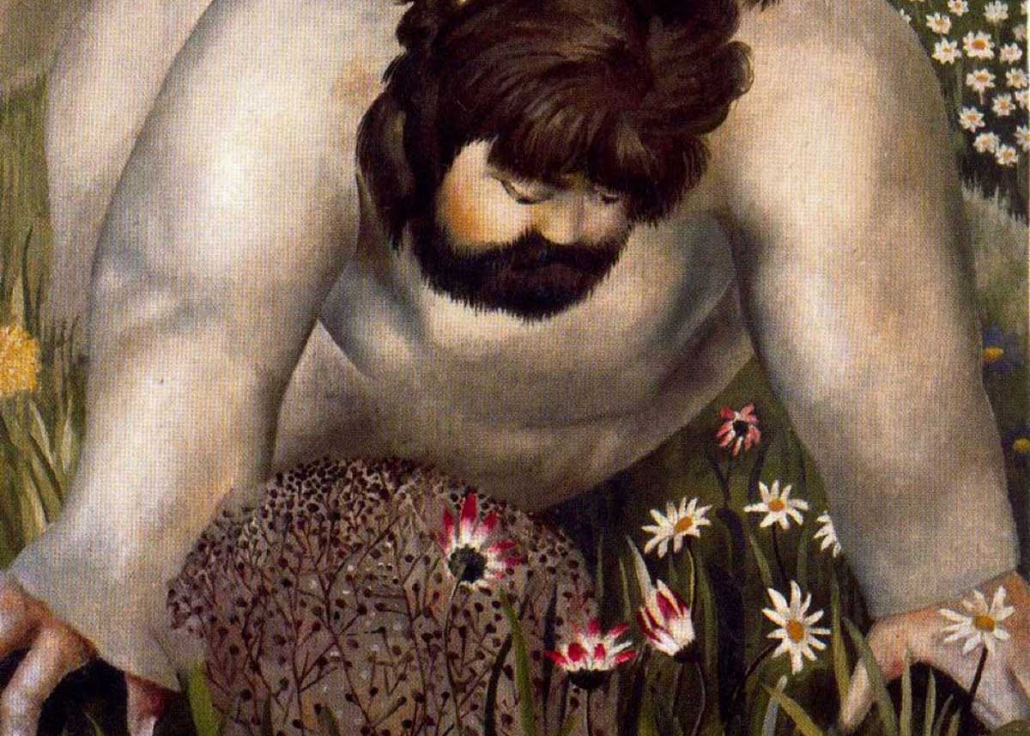Stanley Spencer, ‘Consider the lilies’ (detail), Christ in the Wilderness, 1939.
‘Consider the lilies’
Dr Miriam Pepper
Lent 1, Year C
Luke 4:1-13
The season of Lent, which mirrors Jesus’ 40 days of fasting and temptation in the desert/wilderness, is a time of preparation and discipline when we reflect on the life and ministry of Jesus and renew our commitment to follow in Christ’s way.
“Command this stone to turn into bread,” says the Devil to Jesus. “Prostrate yourself in homage before me, and all the power and glory of the nations will be yours”. “Throw yourself down from the pinnacle of the temple, and God will tell the angels to protect you”.
Jesus is tempted to dominate creation (turn stones into bread), to have authority over human societies (the power and glory of the nations), to draw attention to himself at the centre of the religious establishment through showy miracles that defy the natural order (throw yourself down from here). He resists. Although he is hungry he will not bring bread from stones. He will not pledge his allegiance in exchange for power. And he will not attempt to force God’s hand.
Having overcome this testing, filled with the Spirit, Jesus returns to Galilee and starts his ministry of radical love and inclusion of those who are poor, unwell, ritually unclean and outcast, and his critique of those who oppress them. This ministry will see him chased out of his hometown, condemned as a heretic, abandoned by many of his followers, and ultimately crucified by the state. Far from a ruler who exercises authority over the nations, he is an ironic king whose power is wielded from below, with those who are disenfranchised. Far from not dashing his feet against a stone, his feet are nailed to a cross. This ministry is liberating and challenging – good news for those who are suffering, and a call to solidarity from those who are privileged.
The temptations Jesus faces seem obvious in this story. The Devil, personified, speaks. But it is important that we think carefully about where this occurs and the process that Jesus goes through in realising these temptations.
Jesus spends an extended period in the wilderness, a place where he is unprotected by usual comforts such as shelter. He lives for this time in ecosystems untamed by cultivation or urbanisation. Away from his usual life, he is able to gain perspective on it. Living in the wilderness, “with the wild beasts” (Mark 1:13), he becomes attuned to and appreciative of its integrity and order. He fasts. In experiencing deprivation the temptations he faces become clear to him.
Christians traditionally observe Lent with prayer, fasting and almsgiving. In our Liturgy Resource discussion last month we considered ways we might together practise these disciplines.
The group talked about the many forms of prayer. Prayer is about attending to the Mystery of Goodness in the world, responding to the call of the Other. Prayer can be spoken, sung, enacted; expressed in silence, patience, protest, and more. We also pray with hearts attuned to wisdom other than our own tradition.
Prayer as attending to the Mystery of Goodness in the world. Prayer as paying attention. Prayer as Dadirri, an Aboriginal practice of inner, deep listening and quiet, still awareness of Earth (https://www.miriamrosefoundation.org.au/dadirri/).
One Lent a number of years ago, Andrew introduced us to the works of English painter Stanley Spencer entitled, Christ in the Wilderness. I love the way that Spencer integrates Jesus’ vocation and ministry in these earthy paintings. Spencer intended to complete 40 works, one for each day Jesus spent in the wilderness, with the starting point for each to be an utterance of Jesus from the gospels.
“Consider the lilies” is one of eight completed paintings. Jesus is on all fours, a billowing figure like the mist behind him, gazing in rapt attention at the flowers of the field. It is inspired by Matthew 6:24-34: “Do not worry about your life, what you will eat or what you will drink, or about your body, what you will wear … Consider the lilies of the field, how they grow; they neither toil nor spin, yet I tell you, even Solomon in full splendour was not clothed like one of these.” Spencer also said of the painting that he was inspired by his daughter as a baby, crawling on the grass looking at flowers: “The leaning over the flowers gives me a sense of the Creator brooding over [the] creation, and the analogy between what a baby might do and what God might do is so near in feeling.”
In what ways might we brood over the creation? How might we pay attention to the ecosystems around us and of which we are a part and suspend our busyness and preoccupations?
We are shaped by our practices. By praying, by fasting (from consuming in various ways) and by giving alms we grow close to the wonder of creation; we are emptied of things that usually fill our bodies, our hands, our thoughts, our time; we become focused on the Other who is in need and open to the Spirit. Temptations may be perceived and resisted.
This is not only about individual practices and individual formation but for us as South Sydney Uniting Church. Entering into Lent at a time when big decisions lie before us with regards to our buildings and our mission is significant. May we learn from and through the simplicity of Lent. May we have our hearts opened to where the Spirit is leading us, the way of Christ for us in all its liberation and challenge. Amen.




